Here is the the 4th step of the 6-steps to reap full benefits of PPC in your business. PPC definition, how it works and benefits including challenges were discussed at the Introduction. Setting goals and understanding your target audiences were the topic in Step 1. For a better targeted PPC campaign, Step 2 elaborated on creating customer personas while the latest blog release prior to this one was Step 3 about understanding keywords your target audiences would be searching for. Highly recommended for you to read them first prior to continuing below.
Conducting In-depth Competitor Analysis
Any effective marketing strategy is incomplete without researching wide and deep into the competitors’ strategies. This becomes all the more important in digital marketing space as competition is big, fierce, and dynamic. If you are getting ready for PPC advertising, you will realise that it requires a business to differentiate itself from its competitors in terms of keywords in order to win leads and revenue. This is because the brand terms and core keywords that you are bidding on, your competitors would be using the same ones. This would lead to a bidding war, which can cost you higher cost-per-click (CPC) prices, than you think. Result – lesser returns on investment. Thus, in order to win the PPC battle, you must make sure to conduct an in-depth research and analysis of your competitors.
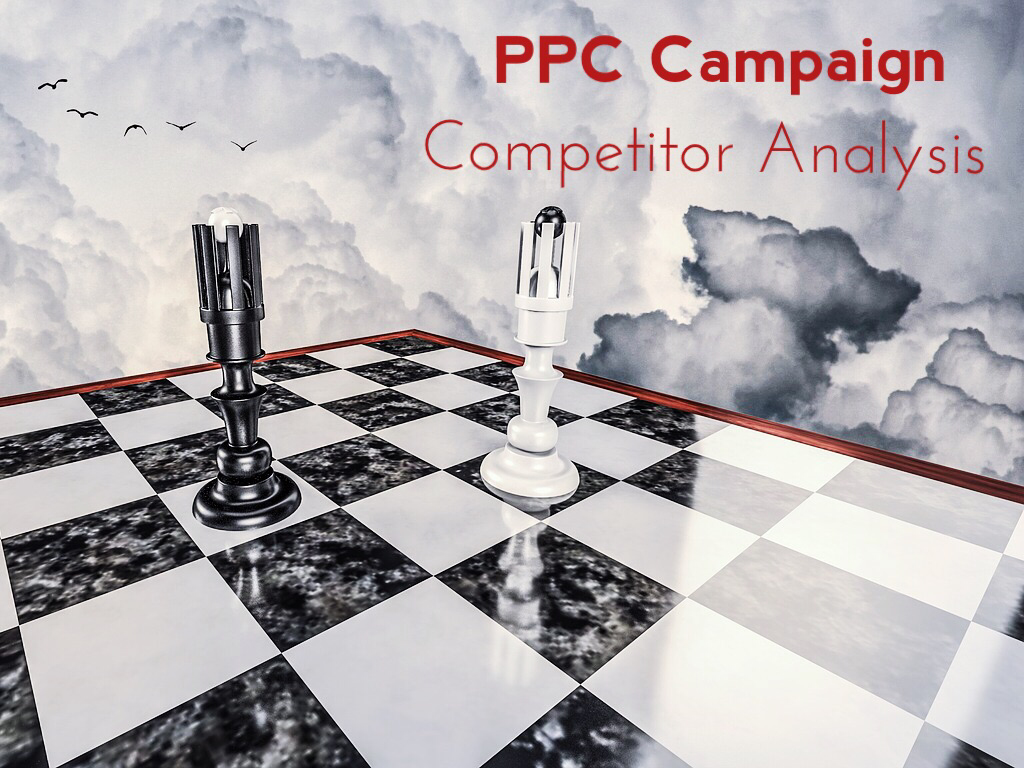
An in-depth competitor analysis includes evaluating your competitors’ websites, landing pages, impressions, messages, offers, and advertisements. All of these will help you understand how the comparable and big players in your industry are playing in the PPC arena. All in all, you need to fetch the following information of your competitors:
Know digital world competitors
You will realise that in the online world, your competitors don’t only include your offline competitors but many beyond them. In the digital world, when we talk about PPC, all those businesses who target your set of keywords are your competitors. So, when you make a Google Search and find names you don’t recognise and don’t think as your competitors, note then down as your PPC competitors now. But, if just in case, you are getting too many new names when putting in your preferred keyword combinations, chances are you are doing your PPC wrong.
Use Adwords’s auction insight statistics which will help you compare performance between you and other advertisers who participated in the same auctions as you. It will do so by providing data on 6 different statistics: impression share, average position, overlap rate, position above rate, top of page rate, and outranking share.
Know their USP
Once you know who your competitors are, it is important to ascertain what is their Unique Selling Proposition (USP) is. It can either be competitive prices or distinctive features, promise to give comfort or ease of use to the user, or anything they want to be remembered for. For this, study your competitors’ websites, especially the home page and about us sections. Note that USP is not only a slogan or a mission statement but a feature that is highlighted as it has a unique value.
For example, Dominos once sold its pizzas like hot cakes by promoting its USP like this: ‘Fresh hot pizza delivered to your door in 30 minutes or less… or it’s free.’ It tells the customer that the pizza is fresh and hot, that is, value for money; pizza is delivered to your door, that is, comfort and ease to the customer; in 30 minutes or less, that is, service is quick; or it’s free, that is, guarantee on service provided.
Know their messages and offers
A crucial step is to regularly check your competitors’ ad copy. This will give you an in-depth understanding of your competitors’ strategies on the public SERP. By learning their offers, messages, and ad copy techniques to entice visitors, you can use these learnings for making a better, more effective ad copy for yourself. You can do this by using appropriate keywords on Google search bar which will then show your competitors in the results.
For example, the following result for ‘buy best microwave in Sydney’ clearly plays well on one very crucial aspect for customers: value for money. Words like ‘save’ and ‘free delivery’

are effective just like the clear call-to-action.
You can also use online tools to fetch an extensive data from your competitors’ ad copy. SpyFu, SEMRush, and iSpionage are some handy tools for keyword and ad copy research which allow you to type in your competitor’s name or URL and see the best performing keywords for organic and paid searches. We recommend using a mix of these and more tools to come up with better informed learnings.
The Essential #Digital #Marketing #Tools🎯
[#SEO #SEM #PPC #Content #GrowthHacking #Blogging #Insight #makeyourownlane #smm] pic.twitter.com/pbfSsT3mg9— Desmond Dreckett (@DesmondDreckett) March 12, 2017
Here is the monthly domain overview for The Iconic (one of the most prominent eCommerce portals in Australia) from SpyFlu:

It also gives a lot of other crucial information like top ad history and top keywords list:
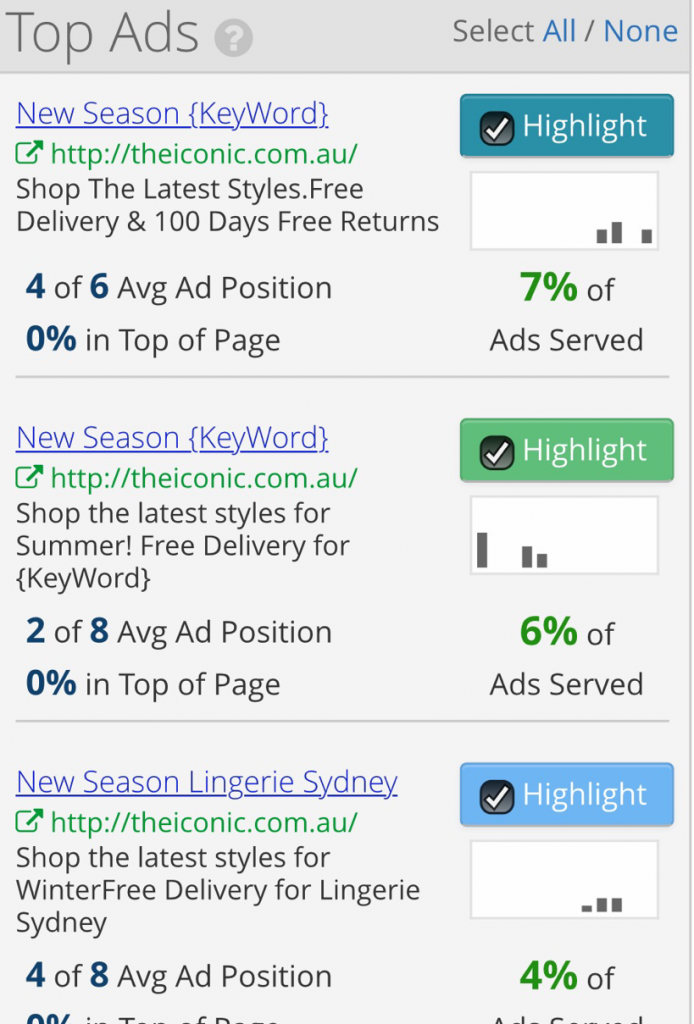
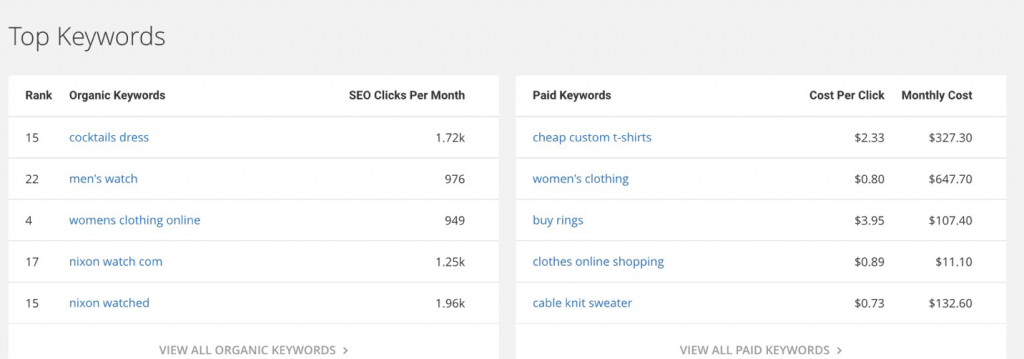
Know how to utilize the information
With regular manual track on your competitors or with the use of tools for keyword and ad monitoring (mentioned in this and previous blogs of this series), it is possible for you to keep pace with the changes your competitors make. With the help of these tools, you can also set up a competitor alert, which will then send any changes made by your competitors directly to your inbox. So, whenever your competitor makes any change in their ad copy, say offers for festive season, you will get to know it instantly.
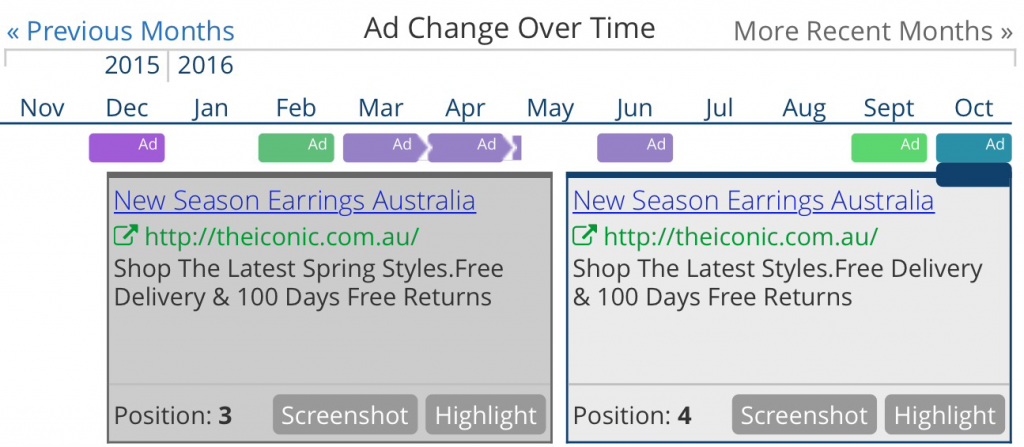
You can use the information related to ad change to make your ad copy better for PPC better. You can either follow the footsteps of your competitor or completely change your path, like using different USP statements to attract customers to minimize competition on some particular keywords.
Another very beneficial use of regularly tracking your competitors’ ads is to follow their landing pages and websites, thereupon. We made a quick search with the same keyword and hit upon the following link on Google. By clicking on this link, we can directly go to the company’s landing page and it looks like this:
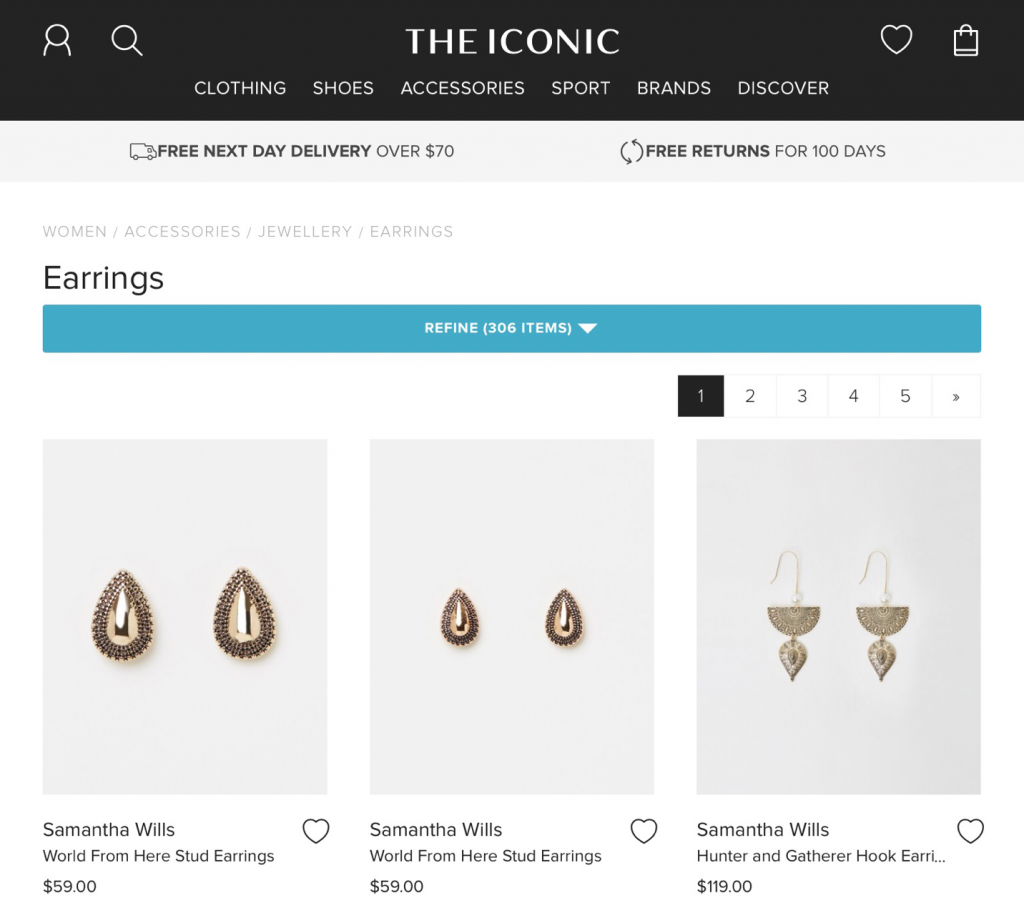
Studying your competitors’ landing pages is one of the most crucial steps in digital marketing. Landing pages are responsible for actually converting the visitors of the website to the customers. We can see that this landing page of The Iconic does justice to the ad copy on display. With two strong selling statements of ‘free next day delivery’ and ‘free returns’, the eCommerce website simply shows the products directly, because this is what the visitors would be most interested in. With ‘refine’ category, visitors can search for products as per their likings. As prices are mentioned alongside each product, it is easy for the visitors to take action quickly.
This way, scrolling through your competitors’ landing pages and taking away the highlights can help you in making your landing pages better.
The #Marketing Metrics That Matter [Infographic]#DigitalMarketing #GrowthHacking #SocialMedia #SMM #EmailMarketing #PPC pic.twitter.com/GS0nKBhz74
— ipfconline (@ipfconline1) March 13, 2017
You know how crucial competitor analysis is for any marketing campaign, so much more for PPC campaign as you have to enter an online auction field with your competitors. As you know now how to research well on your competitors, it is time to fully process and utilize this information to your advantage.
In the next step of series, we will learn how to create high-conversion landing pages and websites (an area we touched upon lightly in this post) in order to actually convert your visitors into customers.
Ash Ganda



